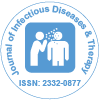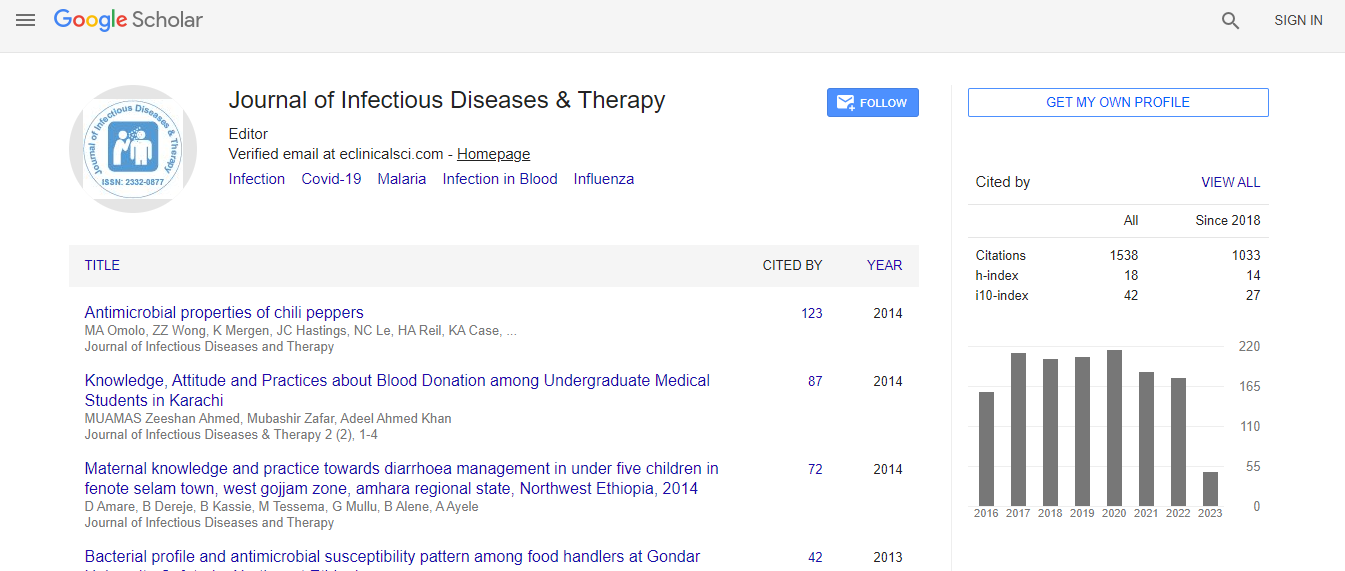Our Group organises 3000+ Global Conferenceseries Events every year across USA, Europe & Asia with support from 1000 more scientific Societies and Publishes 700+ Open Access Journals which contains over 50000 eminent personalities, reputed scientists as editorial board members.
Open Access Journals gaining more Readers and Citations
700 Journals and 15,000,000 Readers Each Journal is getting 25,000+ Readers
Google Scholar citation report
Citations : 1529
Journal of Infectious Diseases & Therapy received 1529 citations as per Google Scholar report
Indexed In
- Index Copernicus
- Google Scholar
- Open J Gate
- RefSeek
- Hamdard University
- EBSCO A-Z
- OCLC- WorldCat
- Publons
- Euro Pub
- ICMJE
Useful Links
Recommended Journals
Related Subjects
Share This Page
Some Essential points about Nosocomial infections
3rd Annual Congress on Infectious Diseases
Samer M Al-Hulu
Al-Qasim Green University, Iraq
Posters & Accepted Abstracts: J Infect Dis Ther
Abstract
Statement of the problem: Hospital infections or nosocomial infections (NIs) play an important role in prolong the hospital stay; increase the cost of additional treatment with high mortality and morbidity. Nosocomial infections (NI) an infection occurring in patient in hospital or other healthcare facility in whom the infection was not present or incubating at the time of admission. The purpose of this study is to describing of some essential points about Nosocomial infections such as transfer, most frequent of Nosocomial infections ,Most group microorganism causes of nosocomial infections, Risk factors for the development of Nosocomial infection , and Prevention. Methodology & Theoretical Orientation: Nosocomial infections transferring by cross-infection, endogenous infection, spread by environmental transfer by inhalation of aerosols, or from a substance. The frequent Nosocomial infections includes lower respiratory tract surgical wounds, urinary tract infections and sepsis. Most group of microorganisms that causes Nosocomial infections includes anaerobic bacteria Clostridium diffcile, facultative anaerobic such as Staphylococcus aureus, coagulase-negative staphylococci, Escherichia coli, Enterococcus spp, Klebesiella spp, and Pseudomonas aeruginosa, and the obligate aerobic Acinetobacter baumannii. The Risk factors for the development of Nosocomial infection includes, age more than 70 years, Shock, Major trauma, Coma, Acute renal failure, Prior antibiotics, Mechanical ventilation Drugs affecting the immune system (steroids, chemotherapy), Prolonged ICU stay (>3 days).Controlling on Nosocomial infections, occurring by limiting transmission of organisms between patients, through adequate hand washing and glove use, and appropriate aseptic practice , isolation strategies, sterilization and disinfection practices, and laundry, controlling environmental risks for infection, protecting patients with appropriate use of prophylactic antimicrobials, nutrition, and vaccinations, limiting the risk of endogenous infections by minimizing invasive procedures and prevention of infection in staff members. Appropriate use of prophylactic antibiotics is one of the important elements of effective prevention programs. Finding: Controlling on Nosocomial infection is very important step for public health. Conclusion & Significance: NI are major source of morbidity, motility of patient, Continuing staff education is very important step for control on Nosocomial infections, and Intensive care units and in acute surgical and orthopedic wards is common source for these infections should be controlled. Recommendations: Hand washing and glove use, and appropriate aseptic practice, isolation strategies, sterilization and disinfection practices, and laundry is important for limitation transmission of organisms between patients in direct patient care.Biography
Samer M. Al-Hulu, Assistant Professor of Microbiology, has completed his PhD from Babylon University/College of Science-Iraq. He has published more than 14 papers in microbiology field. Al-Hulu, has training at Ministry of Health at Laboratory of Babylon Maternity and Children Hospital. Now working at Al-Qasim Green University/College of Food Science-Iraq.

 Spanish
Spanish  Chinese
Chinese  Russian
Russian  German
German  French
French  Japanese
Japanese  Portuguese
Portuguese  Hindi
Hindi 